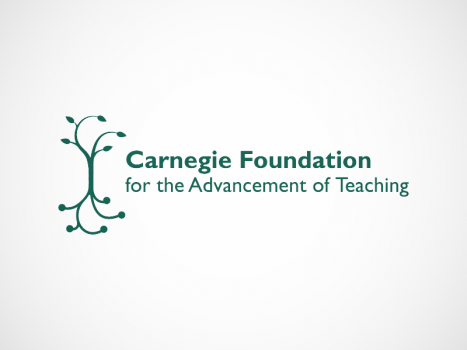The theme of the first full day at Carnegie’s National Forum on developmental mathematics in community colleges was the power of networks.
With representatives from 30 colleges in eight states who have implemented Carnegie’s two new pathways that take students to and through a college-level course in one year joined by representatives from seven new colleges who were learning about the work for the first time, the impressive data of first-year success was overshadowed in part by the story of the contributions of the colleges who worked with Carnegie to develop the pathways.
Carnegie President Tony Bryk emphasized that although the initial year-one data for Statway had surpassed expectations, the real celebration was that by providing information and insights from the implementation of the instructional system, Carnegie and the members of the Networked Improvement Community (NIC) were well on the way to determining what works for whom under what set of conditions. This key principle of improvement science in concert with other principles will ensure that Carnegie will reach its aim that in every college, in every classroom, with a diverse array of students, faculty members teaching the math pathways will be able to advance efficacy reliably.
The first year of data collection and working in networks has provided an opportunity to learn from each other to do better, Bryk said. In the opening session to the 250 plus participants gathered at the Forum, Bryk said the key to the success is “to take the specialized knowledge in this room to make it accessible to everyone.”
Carnegie is now on version 2.0 of the Statway materials and going through a similar process for Quantway. Data has been collected throughout the first year on the students, on faculty, on teaching successes and failures, on the efficacy of the materials, on classrooms and on the institutions, with the goal to use that data to improve what happens every day in each classroom.
“Having good materials isn’t sufficient for getting to student success reliably,” Bryk said. “Knowing how to use the materials well—that’s the key.”
Examples of the ‘knowledge how’ can be explained through learning Carnegie got from the NIC around productive persistence. Carnegie knew that a sense of social belonging was one of the key predictors of a student persisting through the pathway (staying in the course the entire semester). Some of the colleges followed Carnegie’s starter package instruction on implementation of supports for social belonging, but others tweaked it a bit. Those that tweaked it, got better results, showing that Carnegie could improve upon that package. In another instance, the implementation of the design of the materials created by Carnegie and the network really mattered. Those who changed the materials on how to shift a fixed student mindset did not get as positive results as others that followed the pathways materials. Collecting this data, improving on what works and changing what doesn’t, is one of the ways that Carnegie’s work is different from other efforts to improve the success rate of students in developmental math.
“We have activated a community where transparency and trust provides an opportunity for us as a community to learn from each other to improve.” Bryk said.
July 12, 2012
The Carnegie Foundation has launched two pathways, Statway and Quantway, to help students succeed in developmental mathematics. Statway and Quantway are more than courses, they are entire new instructional systems.
July 24, 2012
Carnegie's Pathways has launched several subnetworks, a team of NIC members, to work together on a specific problem, challenge, or development priority within the Network.






